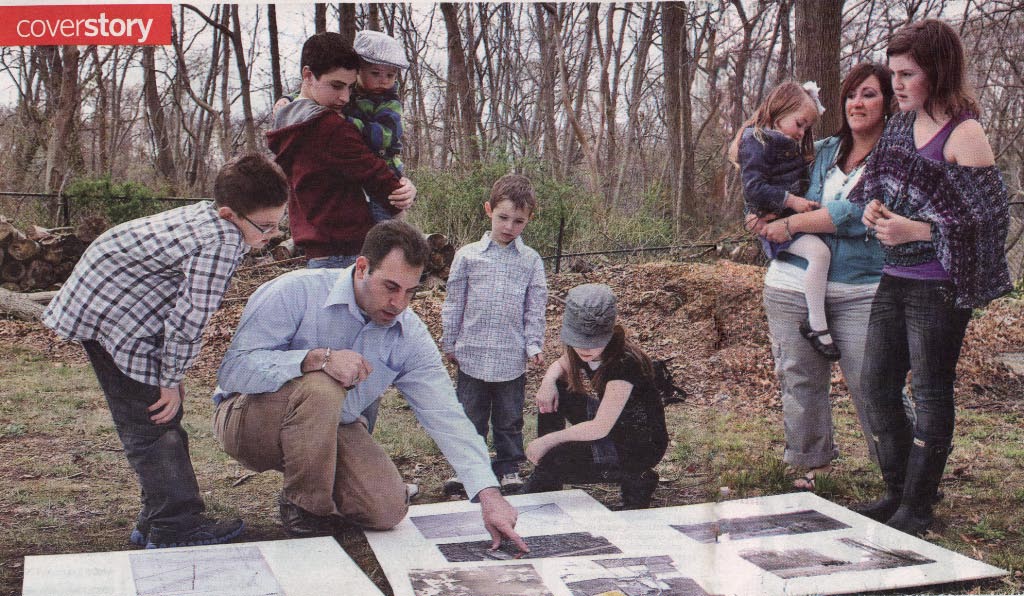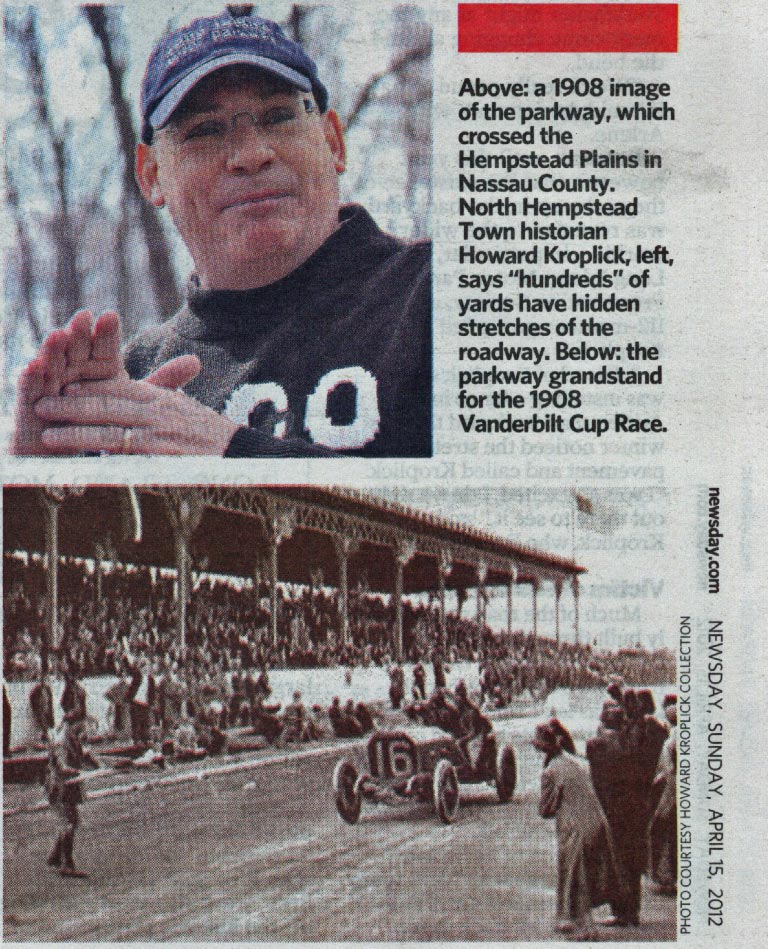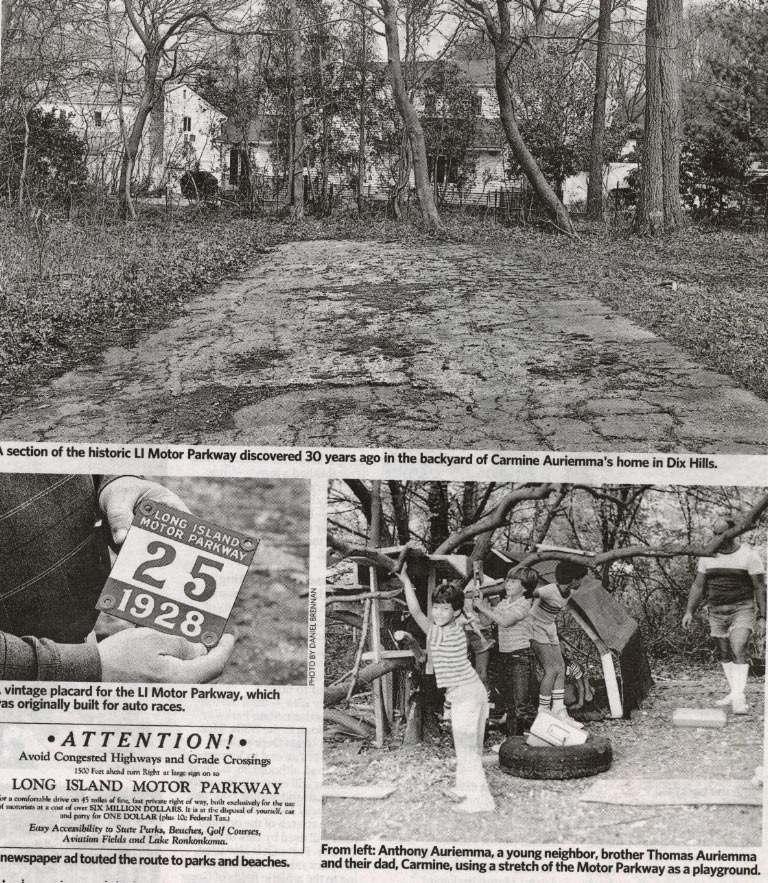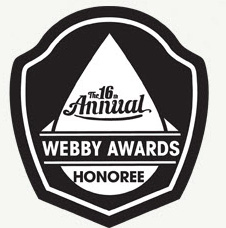Newsday: “Motor Parkway:The road to yesterday”

Report John Hanc has documented the Long Island Motor Parkway Preservation Society's visit to the Dix Hills section of the Motor Parkway.
Come see the Black Beast roar today in Smithtown. Stop by and say hi!
Enjoy,
Howard Kroplick
Motor Parkway: The road to yesterday
Originally published: April 12, 2012 6:40 PM
Upated: April 13, 2012 8:59 PM
JOHN HANC. Special to Newsday
Photo credit: Suffolk County Vanderbilt Museum | In western Nassau County, halfway between the hilly north shore and the ocean, are the Hempstead Plains of Long Island. This photograph, taken in September 1908 from the Carman Avenue Bridge in East Meadow, looks west. The higher elevation of the bridge built by the Long Island Motor Parkway captures the flatness and expanse of the plains. (September 1908)
One day 30 years ago, Carmine Auriemma learned he had a piece of Long Island history running through his backyard. From then on, he became a guardian and keeper of that lore.
Auriemma, 62, who grew up in Brooklyn, had just bought two acres of property in Dix Hills. He was visiting the construction site to see how things were going on his new house, when the builder waved him into the backyard.
"He said he wanted to show me something," recalls Auriemma, who reluctantly complied. "It was like going into a jungle."
There was dense foliage: weeds, poison ivy, crab apple trees and a stately line of oaks. When he got into the densest area, the builder pointed to a three-foot-wide ribbon of concrete that extended the length of the property and into adjacent yards on either side.
"He told me it was the Long Island Motor Parkway," Auriemma recalls. "I probably replied, 'What's the Long Island Motor Parkway?' "
With his curiosity piqued, Auriemma began to learn more about the road built in the early 1900s by William K. Vanderbilt Jr., an auto enthusiast, founder of the Vanderbilt Cup auto race and heir at the time to one of the great fortunes in America. The Motor Parkway was the nation's first road designed solely for cars, and it was an engineering marvel for its time, featuring banked curves, a reinforced concrete surface and guide rails, allowing for a smooth, safe, uninterrupted ride.
Constructed over a five-year period, the road, which initially had a $2 toll, was born out of Vanderbilt's need for a safer route on which to hold his famous auto races.
"His dream was for a safe, smooth, police-free road without speed limits," wrote Howard Kroplick, the Town of North Hempstead historian and co-author of an "Images of America" photo-history book on the parkway, which opened in 1908.
But it evolved into something more. The 45-mile-long roadway, stretching from Fresh Meadows, Queens, to Lake Ronkonkoma, helped to open up Long Island commercially. And it established a legacy -- one that hearkens back to the romantic, early days of automotive travel -- that makes the Motor Parkway a subject of fascination among many Long Islanders to this day.
The road to 'retreating'
Vanderbilt and his associates "extolled the virtues of economic development and the efficiency of quickly retreating from the city to the calm and healthful benefits the fresh country air of Long Island had to offer."
A nice idea -- until the toll-free Northern State Parkway came along in the 1930s. That and the Great Depression helped put an end to Vanderbilt's road, although its skeletal remains still exist in a few places in Nassau and Suffolk counties, principally Motor Parkway, the 13-mile stretch of the original road still used by cars in Suffolk County. Part of it is also used, Kroplick said, as the road leading to the athletic fields of Great Neck South High, as well as in Garden City, where the charming Chamber of Commerce building on Seventh Street is one of the few remaining toll lodges that dotted the parkway.
Kroplick noted that the parkway's $2 toll -- about the equivalent of $45 today -- suggested the economic class of the early motoring public. The parkway closed in 1938.
When the Auriemma family moved into their new, five-bedroom Colonial in 1983, the woods and the old trail became part of the children's playground.
"As we rode our Big Wheels and bikes around the yard, the trail got wider and wider," recalled Thomas Auriemma, now 37 and the eldest of six children.
Eventually, thanks to the miracle of rotary lawn mowers and weed whackers -- not to mention a built-in labor force of six offspring -- Auriemma was able to uncover a 275-foot-long, 16-foot-wide stretch of the road. The Auriemmas adopted the forgotten section of the parkway, maintaining it as assiduously as if a 1927 Studebaker might at any moment come chugging around the bend.
"We're really proud to have it," said Auriemma's wife, Arlene.
It wasn't until this year, however, that the existence of the parkway-in-the-backyard was revealed to the wider world -- in particular, to the Long Island Motor Parkway Preservation Society, a 112-member group led by Kroplick.
A friend of Kroplick's who was installing a fence in the Auriemmas' backyard this past winter noticed the stretch of pavement and called Kroplick. "I was so excited, I drove right out there to see it," said Kroplick, who lives in East Hills.
Victim of subdivisions
Much of the road was originally built through farmland (Vanderbilt bought most of it from the owners). When the land was later sold off and subdivided into plots to build modern suburban Long Island, pieces of the parkway ended up in backyards across northern and central Nassau-Suffolk.
"Hundreds of backyards," Kroplick estimates. "And many of them [homeowners] still don't know it's back there."
Auriemma's stretch is the largest portion in existence in a private backyard, a fact not lost on members of the preservation society, about 20 of whom showed up recently at Auriemma's invitation to explore his backyard. Five of the Auriemmas' children, along with 11 of their 13 grandchildren, were also there, showing off the historic playground of their youth. Kroplick and others arrived in vintage early 1900s cars, converting the Auriemma backyard into a mini-Motor Parkway festival and auto show for the afternoon.
"There's probably more traffic on this stretch of road today than there was in the 1930s," joked society member Mitch Kahn of Floral Park.
The turnout was because of the rarity of this "backyard parkway." Over the years, many other remnants of the road or its 65 bridges were either broken up or plowed over by developers, builders or homeowners, some not knowing the historical treasure under their feet, some not caring.
"I think we need more people like Carmine," Kroplick said. "He saw a piece of history, and instead of covering it up and destroying it, he preserved it. He and his family should be really proud of what they have done."
For more information on the Motor Parkway, visit vanderbiltcupraces.com/motor_pkwy

Photo credit: Suffolk County Vanderbilt Museum | In western Nassau County, halfway between the hilly north shore and the ocean, are the Hempstead Plains of Long Island. This photograph, taken in September 1908 from the Carman Avenue Bridge in East Meadow, looks west. The higher elevation of the bridge built by the Long Island Motor Parkway captures the flatness and expanse of the plains. (September 1908)

Thomas Auriemma and his sister Lorilee Dickson, second from right, look over aerial photos of the Long Island Motor Parkway with their children, nieces, and nephews.




Comments
Although I grew up in Wantagh, my parents friends lived in Albertson and the parkway ran near their home. We played on the concrete road and I often wondered about the history of the parkway.
Great story! Thanks for sharing.
living in bayside my whole life, as kids we rode our bikes thru the parks to discover parts of a road adjacent to Francis Lewis Blvd that as kids seemed to lead to nowhere.
My father a NYC contractor first told me it was remnants of the Vanderbilt race way.( not exact, but close)
Not understanding this exactly for years it came clear as I became a antique auto collector .Later I met Howard and it became crystal clear.